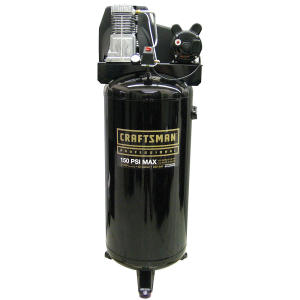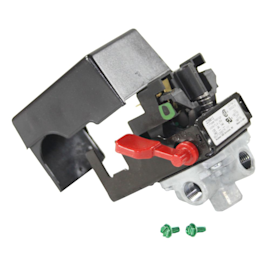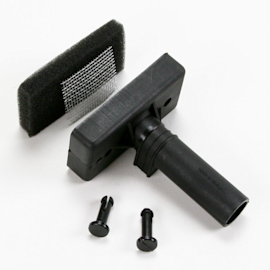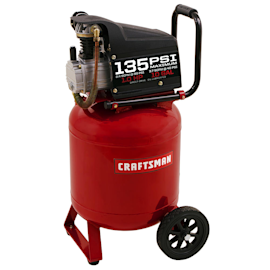The unseen dangers of air compressors


An air compressor is wonderful piece of equipment that, as a single source of energy, provides power to a versatile array of tools. But the potential energy in compressed air could turn the air compressor into a high-pressure air gun or an explosive bomb if used or maintained improperly.
Before using an air compressor, familiarize yourself with the operating, maintenance and safety instructions in the owner's manual. Remember to exercise common sense when using an air compressor and air tools–pay attention to the environment and other people around you, and always be aware of the potential dangers associated with using an air compressor.
Risk of fire or explosion with air compressor motor
Electrical contacts within the air compressor motor or pressure switch can spark, creating a risk for fire or explosion. Serious overheating caused by the restriction of ventilation openings in the air compressor also poses a risk of fire. The following tips can help prevent that from happening.
Operate in a well-ventilated area away from combustible materials.
Locate the compressor no closer than 20 feet from the spray area if spraying flammable material.
Don't place objects on or against the air compressor that could block the ventilation openings or restrict airflow.
Risk of bursting air compressor tank or tools
The air receiver tank and air tools are designed to withstand specific operating pressures. Trying to operate at pressures greater than the design or using a weakened air tank can rupture or burst the tool or air tank. Here are some guidelines to follow:
Drain the air tank after each use to prevent rust or weakening of the tank.
Never try to repair a weakened or damaged tank, or make modifications to the tank. Always replace the tank if it's damaged.
Don't make modifications to the safety valve or any other components that control air tank pressure.
Don't exceed the maximum allowable pressure rating of attachments.
Use hoses and fittings that have a PSI rating equal to or greater than the maximum pressure of the air compressor.
Use a pressure gauge when inflating tires, and add air in small increments.
Other risks of injury or property damage with air compressors
Pressurized air can be strong enough to seriously damage soft tissue, and will propel dirt, particles and small objects at high speeds. The air compressor becomes hot enough to burn skin during use, and objects can be caught in moving parts. The following are some tips to help prevent injury and/or property damage.
Use protective eyewear when using an air compressor.
Never point a nozzle or tool at any part of the body, other people or animals.
Don't touch hot surfaces; allow air compressor to cool down after using before performing maintenance.
Turn the compressor off and bleed the pressure from hoses and tank before servicing or performing maintenance.
Always keep protective guards and shrouds in place, and keep hair, jewelry and loose clothing away from moving parts.
Don't exceed 30 PSI when using compressed air to clean equipment.
Most common symptoms to help you fix your air compressors
Choose a symptom to see related air compressor repairs.
Main causes: loose air tube fitting connections, bad check valve, faulty safety valve, damaged or corroded air tank, bad…
Main cause: bad check valve…
Main causes: tank drain valve open or leaking air, leaky air tank, bad safety valve, worn pump seals, bad pump valve pla…
Main causes: rusted air tank, loose air tube fitting connections, bad check valve, leaky safety valve, bad tank drain va…
Main causes: bad safety valve, pressure switch failure…
Main cause: faulty output air pressure regulator…
Main cause: bad air tank pressure gauge…
Main causes: lack of electrical power, check valve failure, bad pressure switch…
Most common repair guides to help fix your air compressors
These step-by-step repair guides will help you safely fix what’s broken on your air compressor.

How to replace an air compressor pressure switch
You can replace a broken air compressor pressure switch in about 45 minutes. …

How to rebuild an air compressor pump
If the air compressor won't fill the tank with compressed air, rebuild the pump using these steps in about 45 minutes. …

How to replace an air compressor check valve
You can replace a defective air compressor check valve in about 10 minutes.…
Effective articles & videos to help repair your air compressors
Use the advice and tips in these articles and videos to get the most out of your air compressor.

Learn how to tell whether a fuse is blown…

Find out how to reduce air compressor noise.…

See how to perform routine maintenance on your oil-lubricated air compressor.…